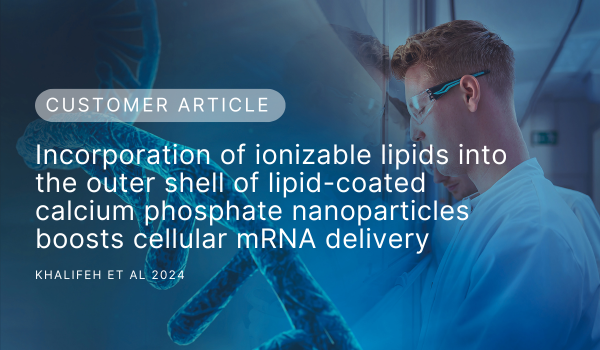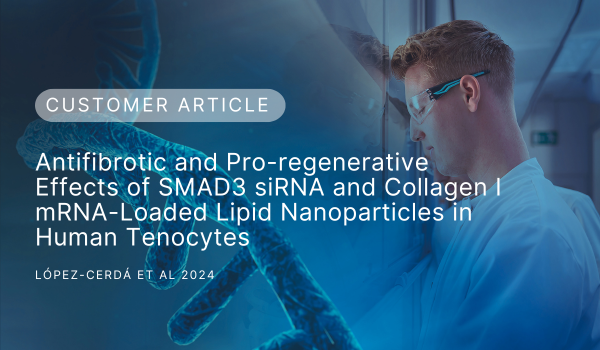Keywords
Cell-Penetrating Peptides, mRNA delivery
Authors
Rik Oude Egberink, Alexander H. van Asbeck, Milou Boswinkel, Grigor Muradjan, Jürgen Dieker, and Roland Brock
Abstract
The formation of noncovalent complexes by mixing of positively charged polymers with negatively charged oligonucleotides (ONs) is a widely explored concept in nanomedicine to achieve cellular delivery of ONs. Uptake of ON complexes occurs through endocytosis, which then requires release of ON from endosomes. As one type of polymer, cell-penetrating peptides (CPPs) are being used which are peptides of about 8−30 amino acids in length. However, only a few CPPs yield effective cytosolic ON delivery and activity. Several strategies have been devised to increase cellular uptake and enhance endosomal release, among which an increase of osmotic pressure through the so-called proton sponge effect, disruption of membrane integrity through membrane activity, and disulfidemediated polymerization. Here, we address the relevance of these concepts for mRNA delivery by incorporating structural features into the human lactoferrin-derived CPP, which shows uptake but not delivery. The incorporation of histidines was explored to address osmotic pressure and structural motifs of the delivery-active CPP PepFect14 (PF14) to address membrane disturbance, and finally, the impact of polymerization was explored. Whereas oligomerization increased the stability of polyplexes against heparin-induced decomplexation, neither this approach nor the incorporation of histidine residues to promote a proton-sponge effect yielded activity. Also, the replacement of arginine residues with lysine or ornithine residues, as in PF14, was without effect, even though all polyplexes showed cellular uptake. Ultimately, sufficient activity could only be achieved by transferring amphipathic sequence motifs from PF14 into the hLF context with some benefit of oligomerization demonstrating overarching principles of delivery for CPPs, lipid nanoparticles, and other types of delivery polymers.



